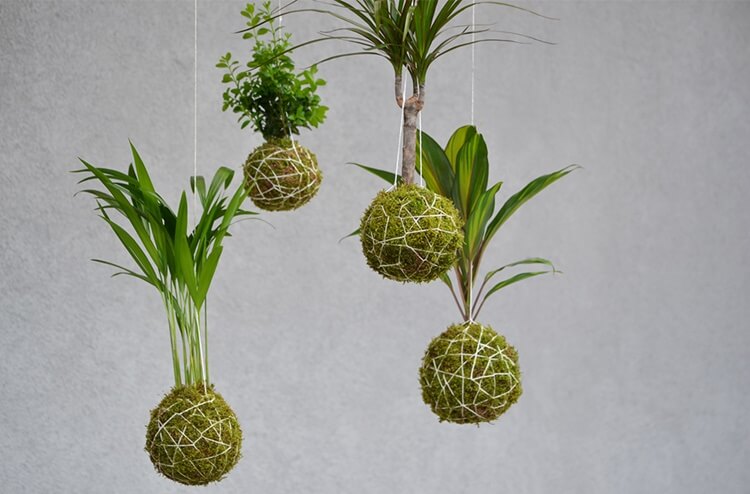Kokedama
Kokedama is a style of Japanese bonsai where a plant’s root system is encased in a ball of growing substrate, wrapped in moss and bound with string, transforming it into a sculptural art form. Loosely translated, ‘koke’ means moss and ‘dama’ means ball. Often, kokedama are suspended from above to form string gardens. There are any number of tutorials and how-to guides available on the internet showing a variety of ways to make kokedama and moss balls. A common thread to these variations is the use of sphagnum moss, oftentimes as part of the growing substrate itself, and certainly for the outer wrap. Spagmoss premier length New Zealand sphagnum moss is an excellent choice for this craft. Spagmoss’ ability to hold 20 times its weight in water helps retain moisture – particularly important given the propensity of kokedama to dry out quickly. Consider adding Spagmoss to the growing substrate itself for increased water retention.
Many tutorials will show the use of short strand sphagnum moss or even sphagnum moss fines when wrapping the ball. Premier length Spagmoss’ 6” strands are a much better solution. Sphagnum cristatum is naturally strong, which means the strands can be wrapped around the ball to provide natural support. The amount of string required to hold the ball together will be reduced. This plus Spagmoss’ natural cream and light green colors add to the aesthetics of the finished product.




